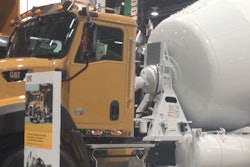Whether you’re a long-time skid-steer loader owner/operator, or are in the market to enhance your equipment fleet and offerings, there is no question that matching the machine to the job should be a top consideration. It’s a first step that will offer increased efficiency and uptime, as well as easy regular maintenance. In addition, skid-steer loader attachment options offer a versatility that’s hard to match.
“It used to be that you either had a very large machine and a shovel, but nothing in between,” says Mike Fitzgerald, Bobcat loader product specialist. “Compact equipment, like skid steers, makes an operator’s job immensely efficient and eliminates a lot of manual labor.”
When choosing a skid-steer loader, be sure to let the dealer know exactly what the machine will be used for. Do you need something that fits well in tight spaces, like residential back yards, or do you have plenty of room on new construction sites? Are you picking up material and loading it into a truck, requiring extra lift and reach, or are you doing final grading work? These are all important parameters that help a dealer best understand your needs.
The environment the machine will be working in is another important consideration, including dust and debris in the summer, or cold, snowy conditions in the winter. Pressurized cabs provide the operator excellent protection from the elements, while maintaining a comfortable temperature inside the cab.
When it comes to operation and maintenance of a skid-steer loader, “it’s always best to first and foremost follow the manufacturer’s instructions that come with the machine,” Fitzgerald says. “Match the machine to the job. Don’t try to load the bucket beyond its rated capacity. If you’re using hydraulically powered attachments, like a breaker, be sure the auxiliary flow is within the appropriate range for the breaker.”
Following the recommended operation and preventative maintenance guidelines will ensure a machine performs efficiently and hopefully ward off any unnecessary repairs, minimizing costs. Machine performance varies based on who is operating the equipment, so Fitzgerald suggests that if a foreman or owner notices one person operating more effectively versus another to find out what the differences are and implement those efficiencies when training new operators.









